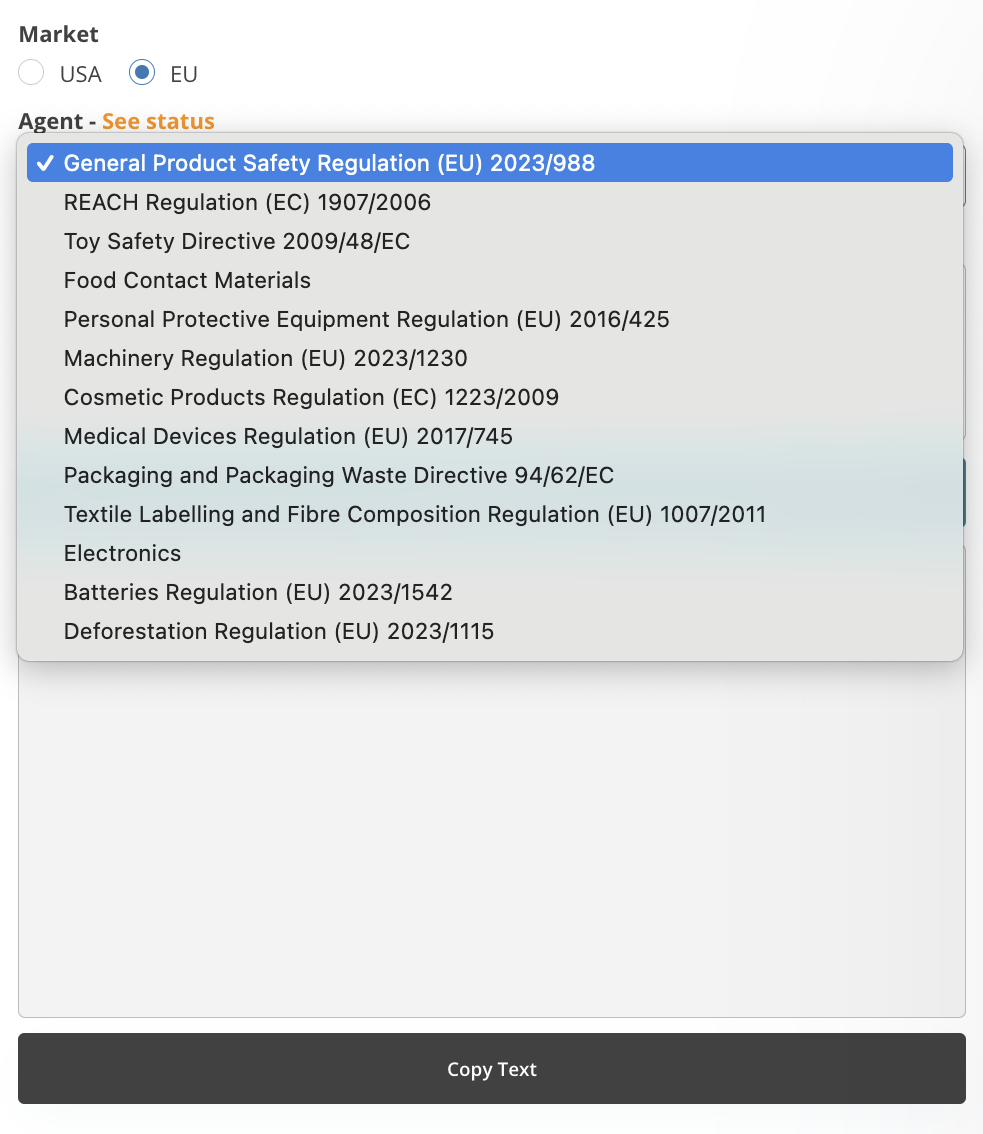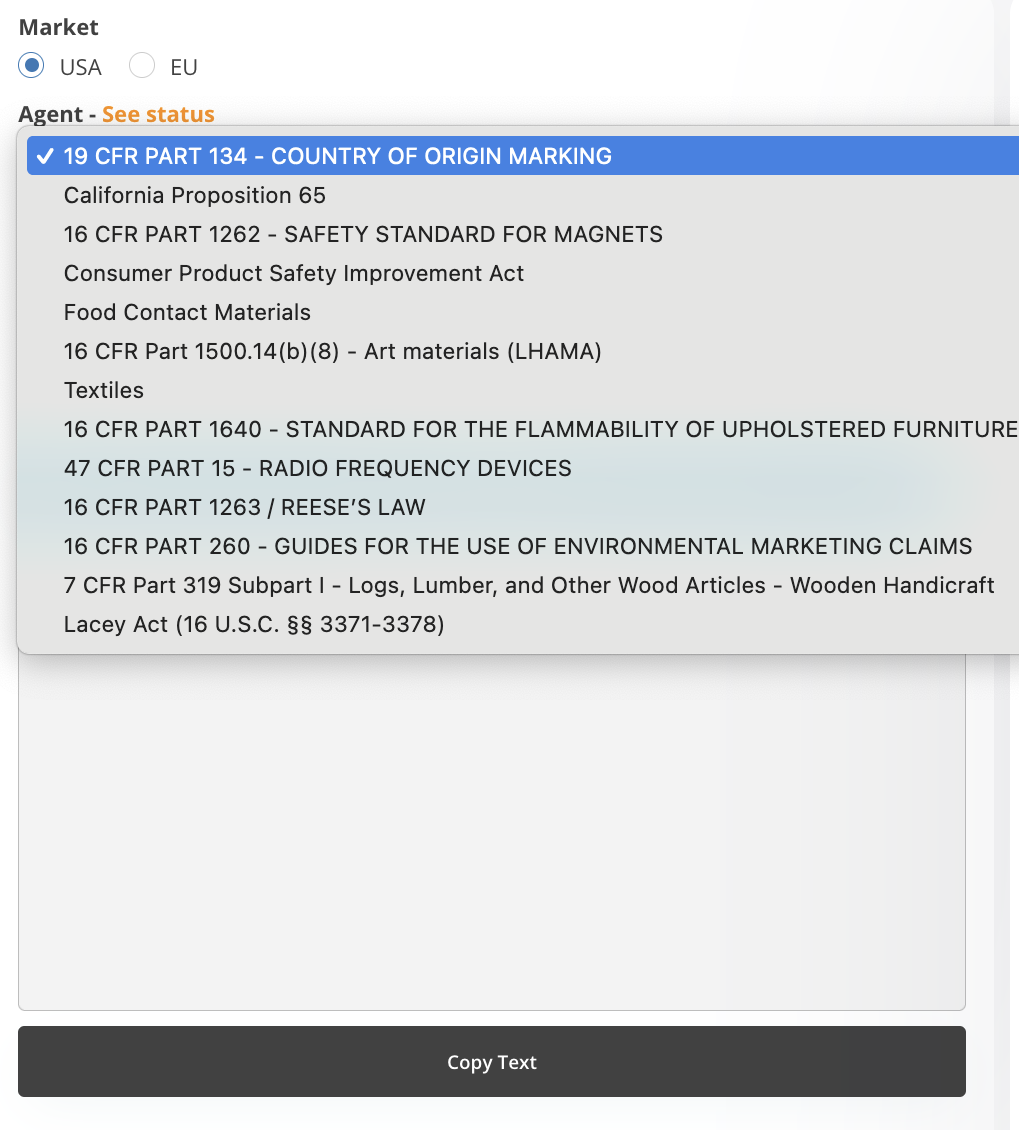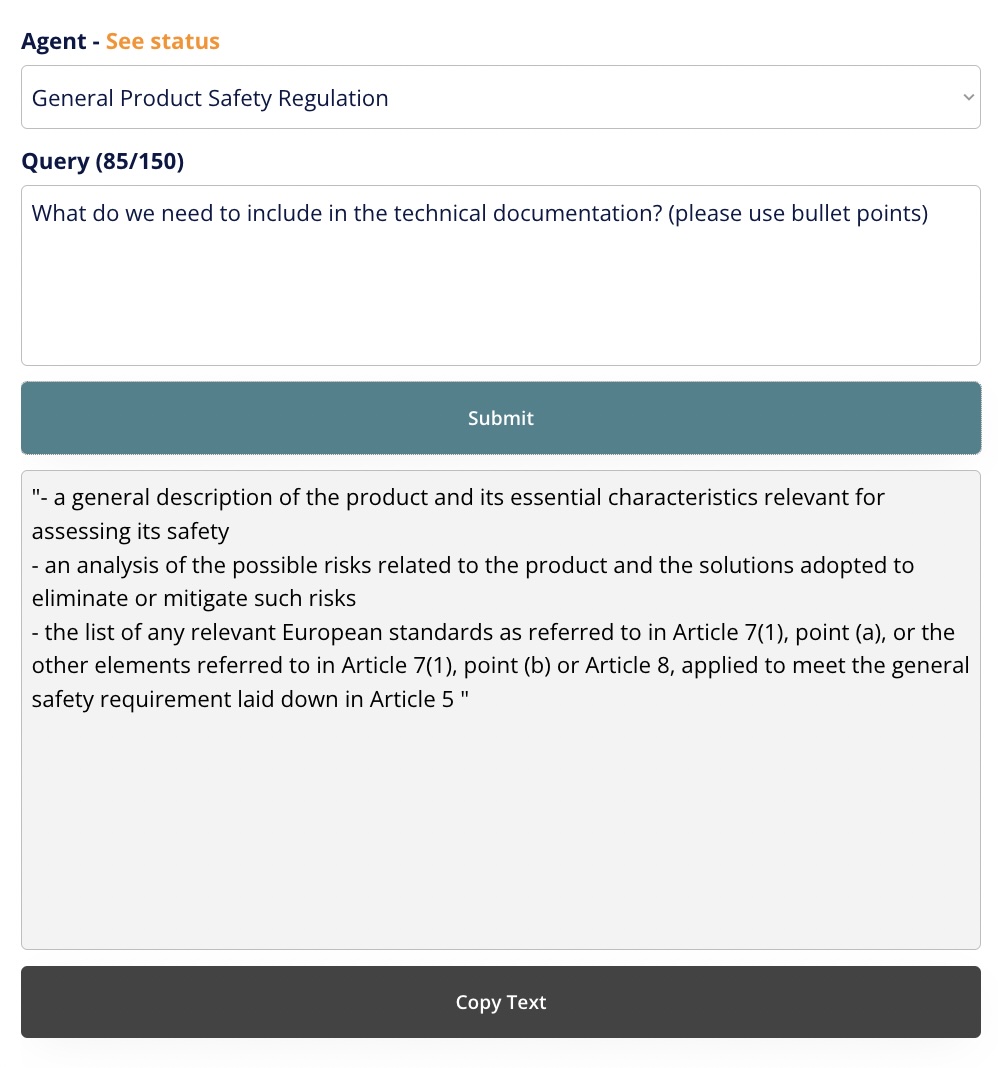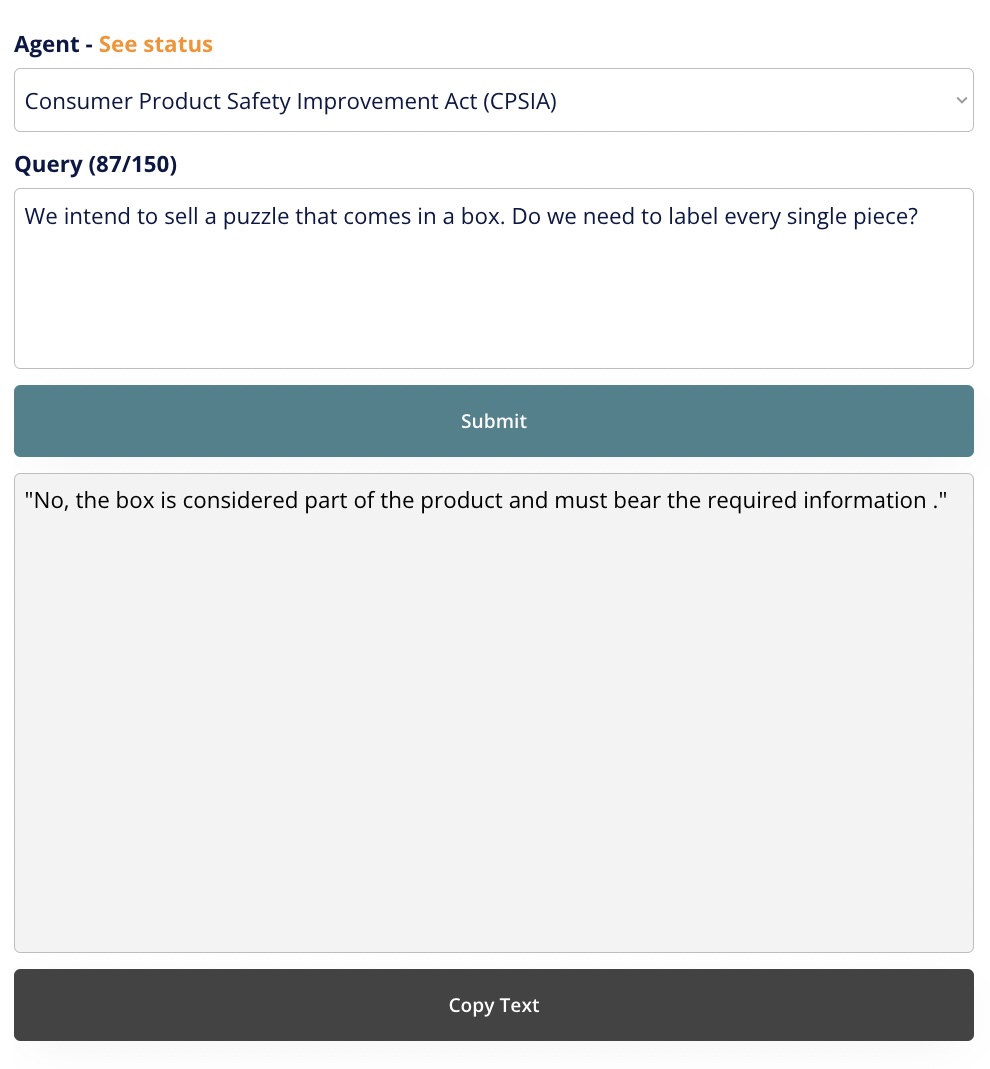AI Tool
What is an AI agent?
An AI agent is a Large Language Model (LLM) interface connected to a knowledge base. The knowledge base contains regulation texts, guidance documents, and other relevant documentation.
The AI agent searches the knowledge base for relevant information and uses this to generate a more relevant output.
How is this different from ChatGPT?
Our AI agents can access a knowledge base consisting of EU and US regulations and other relevant texts. Hence, it is more likely to generate relevant responses – compared to ChatGPT which is trained on a broader set of training data which is not specific to product compliance.
How often are the knowledge bases updated?
We update the documentation in January of each year. Hence, we update the documents in the knowledge bases every 12 months.
EU Agents
Available AI Agents
General Product Safety Regulation (EU) 2023/988
REACH Regulation (EC) 1907/2006
Toy Safety Directive 2009/48/EC
Food Contact Materials
Personal Protective Equipment Regulation (EU) 2016/425
Machinery Regulation (EU) 2023/1230
Cosmetic Products Regulation (EC) 1223/2009
Medical Devices Regulation (EU) 2017/745
Packaging and Packaging Waste Directive 94/62/EC
Textile Labelling and Fibre Composition Regulation (EU) 1007/2011
Electronics
Batteries Regulation (EU) 2023/1542
Deforestation Regulation (EU) 2023/1115
US Agents
Available AI Agents
19 CFR PART 134 – COUNTRY OF ORIGIN MARKING
California Proposition 65
16 CFR PART 1262 – SAFETY STANDARD FOR MAGNETS
Consumer Product Safety Improvement Act (CPSIA)
Food Contact Materials
16 CFR Part 1500.14(b)(8) – Art materials (LHAMA)
Textiles
16 CFR PART 1640 – STANDARD FOR THE FLAMMABILITY OF UPHOLSTERED FURNITURE
47 CFR PART 15 – RADIO FREQUENCY DEVICES
16 CFR PART 1263 / REESE’S LAW
16 CFR PART 260 – GUIDES FOR THE USE OF ENVIRONMENTAL MARKETING CLAIMS
7 CFR Part 319 Subpart I – Logs, Lumber, and Other Wood Articles – Wooden Handicraft
Lacey Act (16 U.S.C. §§ 3371-3378)
Example A: General Product Safety Regulation Agent (EU)
Relevant for exploring requirements under the GPSR, which covers consumer products sold in the EU.
Example B: CPSIA Agent (USA)
Relevant for exploring CPSIA requirements applicable to children’s products sold in the United States.
Risk Disclosure
The Risk Disclosure document explains the features of the Compliance Gate Platform, and their limitations and risks.
AI Tool White Paper
Prompt guidelines
1. You will often receive a more relevant answer if your question mentions the relevant regulation or directive.
Why? The AI tool reads from a knowledge base that includes several sources. Providing more context and using relevant terminology helps the agent find the most relevant source texts.
Example: Does the Toy Safety Directive 2009/48/EC cover pet toys?
Example: What should I include in the technical documentation under the Toy Safety Directive 2009/48/EC?
2. Alternatively, include the product name in your question.
Example: Which regulations or directives cover electronic toys?
3. More open-ended questions tend to result in lower-quality responses.
4. Use terminology relevant to the regulation and/or product for more accurate responses.
5. You can ask the agent to provide a response using a certain format.
Example: Summarise what I need to include in a Toy Safety Directive 2009/48/EC Declaration of Conformity using bullet points
Example: Does the Toy Safety Directive 2009/48/EC cover pet toys? (explain why it does or doesn’t)
6. Ask one focused question at a time. Including too much information can make it harder for the agent to identify relevant source texts in the knowledge base.
7. Try to frame queries in different ways to explore different angles.
How should the AI agents be used?
1. Each AI agent is connected to a knowledge base, which includes a set of source texts. You can ask questions to explore compliance requirements related to connected source texts.
2. You can ask questions from different angles to better understand certain aspects of the requirements.
3. The AI tool does not verify if the output is correct. As such, you must never rely on or act on the AI-generated output as a primary source of information. Carefully read the latest version of the relevant regulatory text or guidance page before taking any action.
4. You can find the source texts for all AI agents here.
AI agent limitations
1. The AI agents do not think or understand the generated output.
2. The AI agents cannot fact-check, interpret, or understand the generated output.
3. The AI agents generate a response by predicting the next word based on mathematical probability. Think of it as an advanced autocomplete software.
4. The AI agents can only generate a relevant output to the extent that the knowledge base contains information sufficient for an “answer”. However, regulations and guidance documents do not address every single question, situation, or scenario. However, it may still generate an output based on irrelevant sources.
5. There is a limit to the quantity of text that an LLM can process. Hence, the agent may not be able to include every single piece of information from the knowledge base that would be required for sufficiently accurate output.
6. The AI agents can make mistakes when selecting knowledge base sources, and source items. This can result in an incorrect output being generated.
Recommended process
Step 1: Write your question/query
Step 2: Reframe your question a few times – Is the output consistent?
Step 3: Compare the output to the source text – Does it match or can you find errors?
Risks
1. The LLM can output incomplete information.
2. The LLM can hallucinate and output false information.
Data
1. The AI tool does not operate as an archive or file storage service. You are solely responsible for the backup of generated outputs and other safeguards appropriate for your needs.
2. The AI tool sends the user prompt to an external data processor. Read the Privacy Policy for more details
3. We keep a copy of the prompts and generated answers in the external data process for 7 days. This is only done for debugging reasons, in case we find issues with the AI tool. After 7 days, this data is deleted.
















